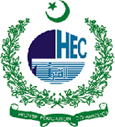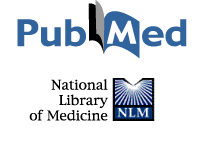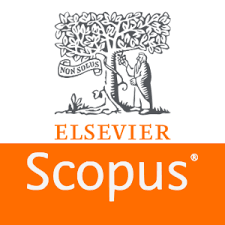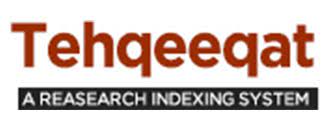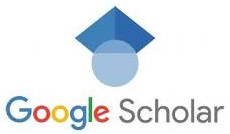NEONATAL AND INFANT AIRWAY MANAGEMENT GUIDELINES: A GAP FILLED
DOI:
https://doi.org/10.55519/JAMC-01-12818Keywords:
Airway, Neonate, Infants, GuidelinesAbstract
Dear Editor,
Finally, the inaugural guidelines on the airway management in infants and neonates have been jointly issued by the European Society of Anaesthesia and Intensive Care, and the British Journal of Anaesthesia.1 Since our medical school and latter during post-graduate training, we have been taught the differences in the anatomy and physiology between adults and pediatric patients. These new guidelines have addressed preoperative airway evaluation, medication protocols, airway management techniques, difficult airway management, tracheal intubation confirmation and tracheal extubation, and human factors.
Following recommendations are proposed for the airway management in this sub set population of patients: 1. Use of medical history and physical examination for predicting difficult airway. 2. Ensuring an adequate level of sedation or general anaesthesia. 3. Administering neuromuscular blockers before tracheal intubation in cases where spontaneous breathing is not required. 4. Prioritize the use of video-laryngoscope with an age-adapted standard blade as the primary choice. 5. Employ apnoeic oxygenation. 6. Consider a supraglottic airway device for rescue oxygenation and ventilation in difficult cases. 7. Limit the number of tracheal intubation attempts. 8. Use a stylet to reinforce and pre-shape tracheal tubes. 9. Verify successful intubation through clinical evaluation and end-tidal CO2 waveform evaluation. 10. Employ high-flow nasal oxygenation, continuous positive airway pressure for post-extubation respiratory support when needed. There is no doubt that a focused history and physical examination can be very helpful not only in adults but also in children. Use of sedatives and neuromuscular blocking agents in infants and neonates are not associated with any additional adverse effects and these drugs can increase the success rate. Not all the hospitals in our country are equipped with video-laryngoscope. Those institutions with adequate resources should ensure that one difficult airway trolley, equipped with video laryngoscope, is available in the hospital (operation theatre) which can be accessed in the emergency situations. This trolley should be available within five minutes in difficult airway management scenarios. At the same time, we should not abandon the traditional direct laryngoscopy skills which are equally important to learn and practice. In terms of the use of the apneic oxygenation in this population, the decision should made on case-to-case basis, and the experience of the operator, therefore, the author doesn’t think that it should be a standard of care in all patients. It is reasonable to define unanticipated difficult airway in this group of patients as: ‘two failed intubation attempts’ because no such definition is available and this will help in the medical research and communication between the healthcare professionals. Supraglottic airway device is undoubtedly helpful in both adults and paediatrics in emergency situations. In cases where EtCO2 monitoring is unavailable, chest auscultation is a useful alternative in experienced hands to confirm the endotracheal tube position. In addition to this chest radiography, bedside ultrasound are useful alternatives to confirm the ETT position. A pre-intubation checklist can help prevent human errors and there is strong evidence to support the use of safety checklists in anaesthesia and surgery, such as WHO surgical safety checklist, and central venous cannulation checklist. Quality of care at the departmental or institutional level can be improved by continuous medical education and regular clinical audits. In conclusion, the publication of these guidelines is a commendable step forward, filling a significant gap in clinical practice. Implementation of these recommendations has the potential to substantially improve the patient care. We strongly advocate for the endorsement and adaptation of these guidelines by the Pakistan Society of Anaesthesiologists to ensure their widespread adoption and adaptation to our unique healthcare landscape.
References
1. Disma N, Asai T, Cools E, Cronin A, Engelhardt T, Fiadjoe J, et al. Airway management in neonates and infants: European Society of Anaesthesiology and Intensive Care and British Journal of Anaesthesia joint guidelines. Eur J Anaesthesiol 2024;41(1):3–23.
Downloads
Published
How to Cite
Issue
Section
License
Copyright (c) 2025 Faraz Mansoor, Maimoona Haroon

This work is licensed under a Creative Commons Attribution-NoDerivatives 4.0 International License.
Journal of Ayub Medical College, Abbottabad is an OPEN ACCESS JOURNAL which means that all content is FREELY available without charge to all users whether registered with the journal or not. The work published by J Ayub Med Coll Abbottabad is licensed and distributed under the creative commons License CC BY ND Attribution-NoDerivs. Material printed in this journal is OPEN to access, and are FREE for use in academic and research work with proper citation. J Ayub Med Coll Abbottabad accepts only original material for publication with the understanding that except for abstracts, no part of the data has been published or will be submitted for publication elsewhere before appearing in J Ayub Med Coll Abbottabad. The Editorial Board of J Ayub Med Coll Abbottabad makes every effort to ensure the accuracy and authenticity of material printed in J Ayub Med Coll Abbottabad. However, conclusions and statements expressed are views of the authors and do not reflect the opinion/policy of J Ayub Med Coll Abbottabad or the Editorial Board.
USERS are allowed to read, download, copy, distribute, print, search, or link to the full texts of the articles, or use them for any other lawful purpose, without asking prior permission from the publisher or the author. This is in accordance with the BOAI definition of open access.
AUTHORS retain the rights of free downloading/unlimited e-print of full text and sharing/disseminating the article without any restriction, by any means including twitter, scholarly collaboration networks such as ResearchGate, Academia.eu, and social media sites such as Twitter, LinkedIn, Google Scholar and any other professional or academic networking site.



